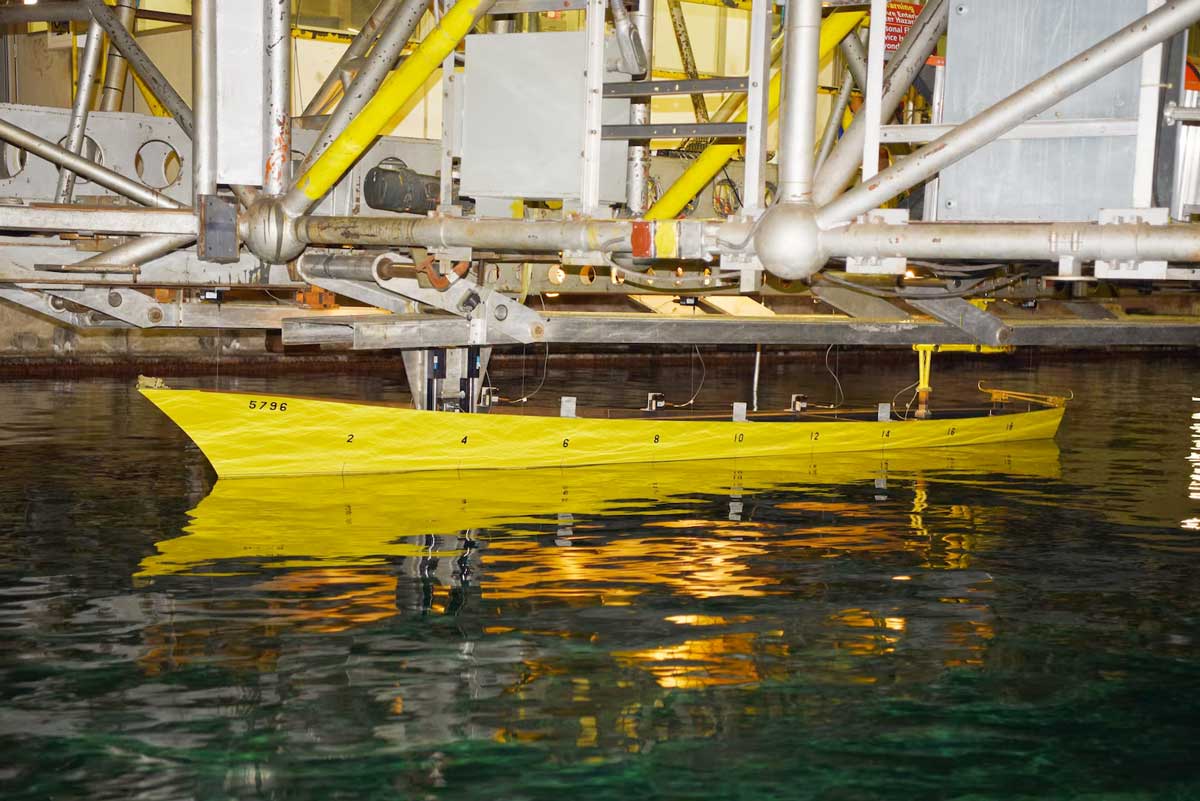The Naval Surface Warfare Center, Carderock Division’s Naval Architecture and Engineering Department is conducting a Large-Scale Additive Manufacturing (LSAM) model feasibility study to evaluate the accuracy of using additively manufactured models for future experiments.
The project, supported by the Naval Innovative Science and Engineering (NISE) program, aims to determine whether 3D-printed models – specifically a model of the Arleigh Burke-class destroyer (DDG 51) – can withstand the typical stresses of a towing experiment while achieving comparable results to traditionally fiberglass-fabricated models.
“I think one of the big interests within Carderock as a whole, and especially our department, is wanting to transition this technology for practical use,” Engineer Kyle Mosqueda said. “We could build models a lot faster and a lot cheaper.”
The preliminary investigations began in late 2019 to early 2020 with the 3D printing of a model-sized submarine bow as a proof of concept. Spurred on by the positive results, the Naval Architecture and Engineering Department leadership pushed for the creation of a full 3D-printed surface ship model. The promising beginnings led to the submission of a proposal to NISE in 2021, which was ultimately funded.
Hopes are high that this experimental investigation will not only provide significant cost and time savings for the U.S. Navy in the areas of manufacturing, assembly and testing, but could also bring about a fundamental shift in the way models are designed and manufactured for testing. The specific characteristics that will be monitored include water absorption, hull crack development and the extent of hull deformation underway.
“I’m curious to see if the DDG 51 model deflects while underway,” Mosqueda said before the test in September. “I am testing the fiberglass model and the LSAM model one after the other, and then comparing the results. I have high confidence that they will be comparable and will further validate this great piece of technology for future implementation.”
The 20.23-foot-long, 2.49-foot-wide model was designed in Carderock and outsourced to Airtech International, Inc. in Springfield, Tennessee, for manufacturing. Initial tests and comparisons of the 3D-printed model with a conventional fiberglass model are already showing promising results in terms of overall resistance and deformation under load, opening the door for further testing and possibly widespread implementation of LSAM technology in the future.
Subscribe to our Newsletter
3DPresso is a weekly newsletter that links to the most exciting global stories from the 3D printing and additive manufacturing industry.






















